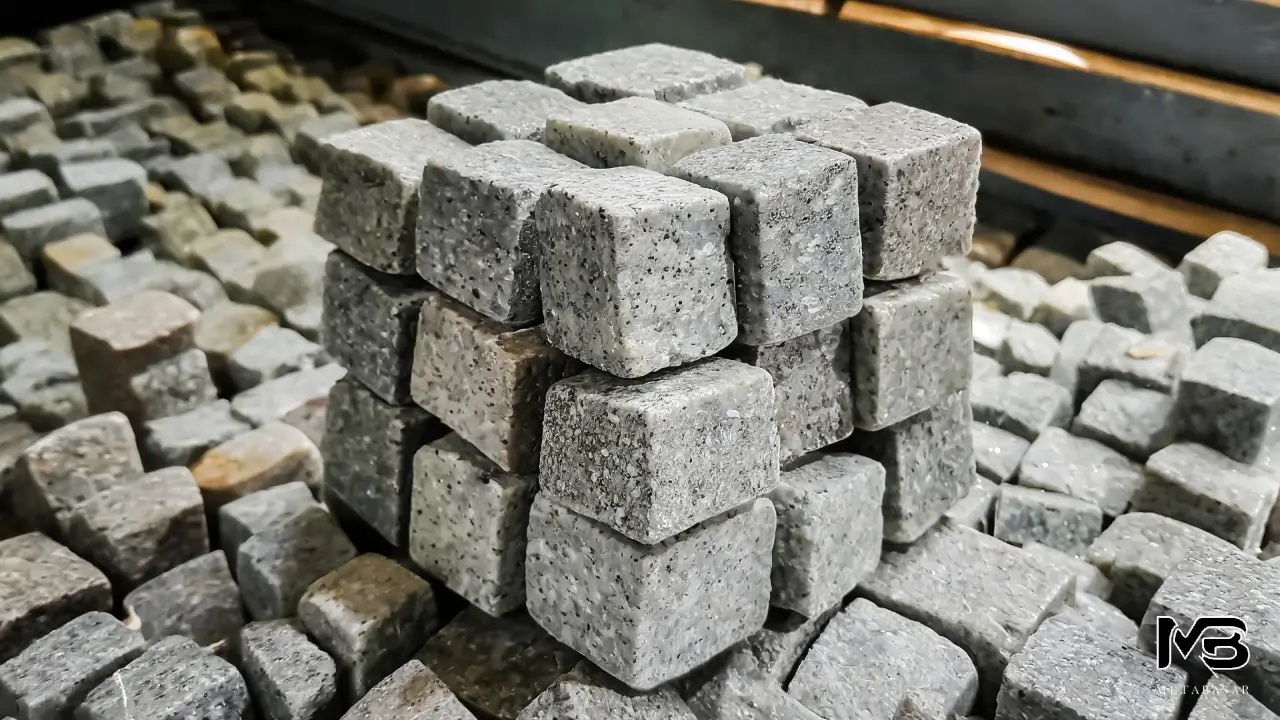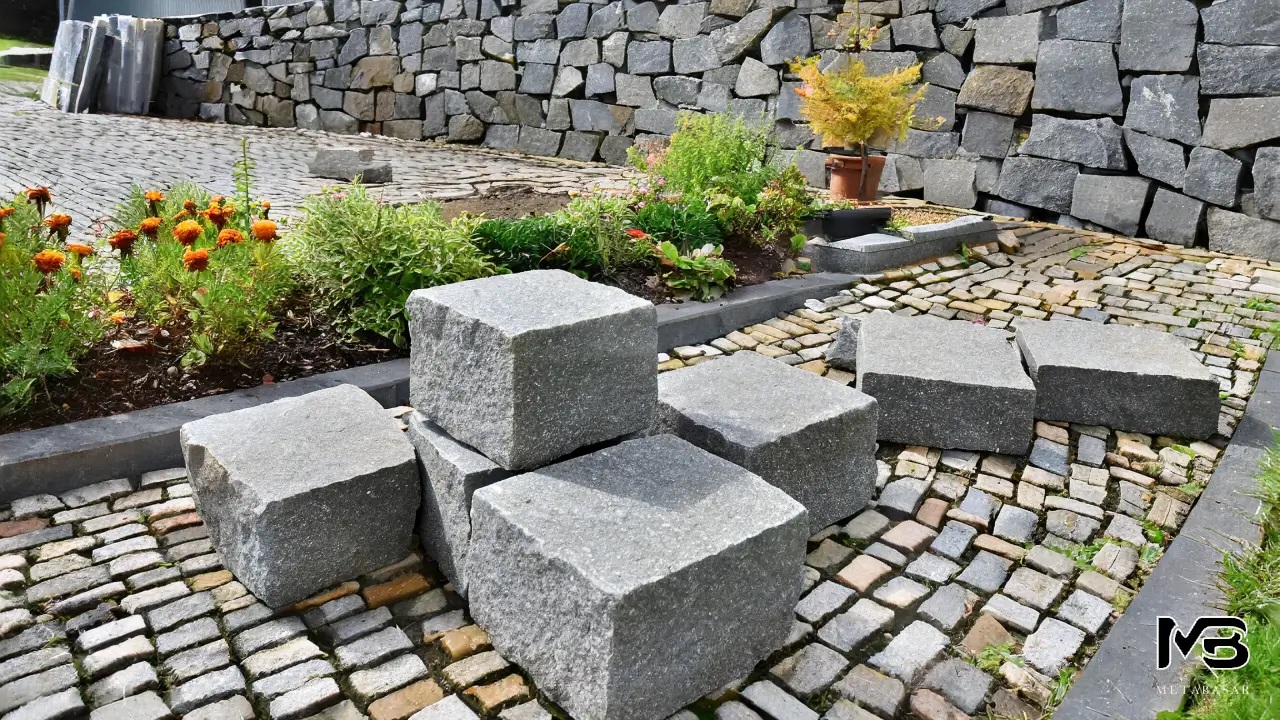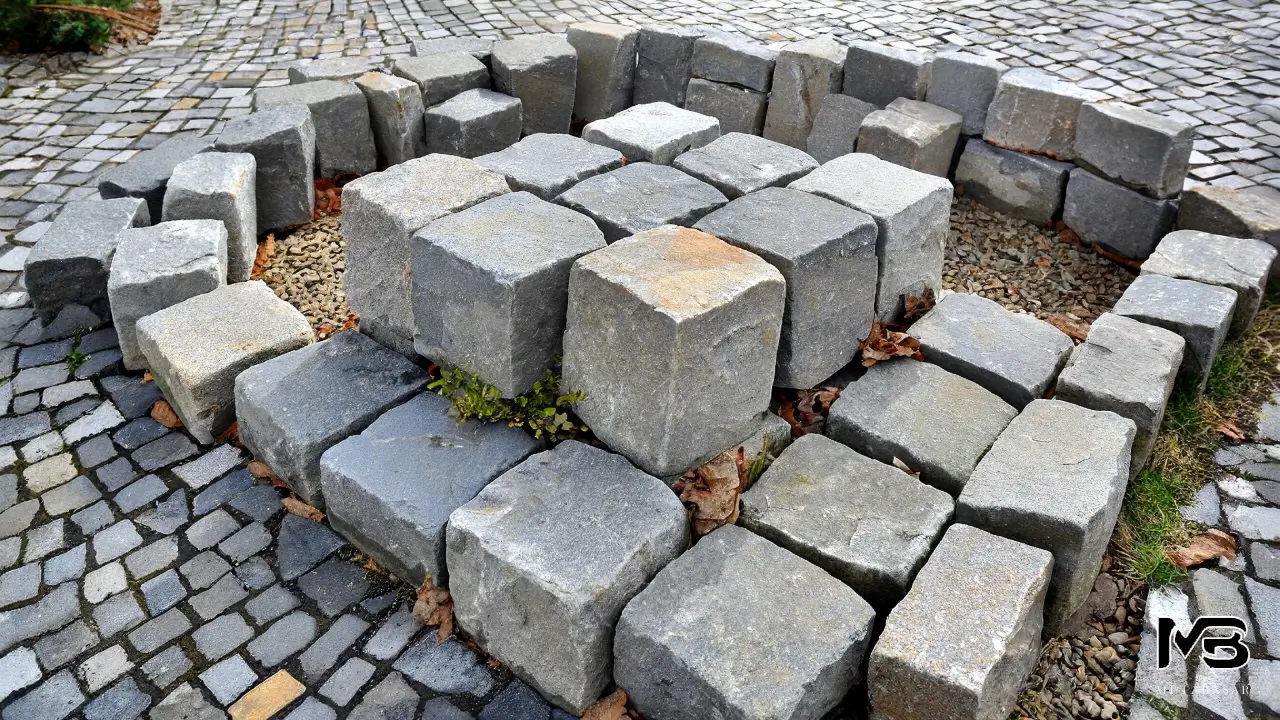Table of Content
- 1 What is Cubicstone And How Does It Work?
- 2 Understanding Cubicstone
- 3 The Connection Between Cubicstone and Architecture
- 4 Future Prospects
- 5 What is Cubicstone Technology?
- 6 How Does Cubicstone Technology Work?
- 7 Benefits of Using Cubicstone in Architecture
- 8 Challenges of Implementing Cubicstone in Architecture
- 9 Examples of Cubicstone in Architecture
- 10 Advantages and Disadvantages of Using Cubicstone For Construction
- 11 Future Applications of Cubicstone Technology
- 12 Is Cubicstone The Future of Architecture?
- 13 Frequently Asked Questions
- 13.1 What are some unique features of Cubicstone in comparison to traditional building materials?
- 13.2 Are there any environmental benefits to using Cubicstone in construction?
- 13.3 Can Cubicstone be used for both residential and commercial buildings?
- 13.4 What is the cost comparison between Cubicstone and other building materials?
- 14 Conclusion
What is Cubicstone And How Does It Work?
Architecture is an ever-evolving field, constantly pushing the boundaries of design, sustainability, and functionality. In recent years, a new material has emerged that promises to revolutionize the way we build and experience structures. This material is called Cubicstone, and it has the potential to shape the future of architecture.
In this blog, we will explore the vision behind Cubicstone, its key principles, and how it is changing the architecture landscape. We will also delve into the benefits, challenges, and future prospects of using Cubicstone in construction. So, let’s dive in and discover the exciting world of Cubicstone, the future of architecture.
Understanding Cubicstone
Cubicstone capital management services work towards client benefit, providing essential financial services through professional advisers with years of experience. Expert senior management ensures long-term partnerships with clients, while investment management involves client relationships and portfolio management services. In cubic stone capital management services, professional advisers work diligently in London, capitalizing on their expertise.

The Vision Behind Cubicstone
The vision of Cubicstone capital management services is to benefit their clients through granite cubicstone capital management, supported by professional advisers with years of experience. Essential financial services are provided, ensuring long-term partnerships under expert senior management. Investment management involves client relationships, portfolio management services, and professional advisers work diligently in cubic stone capital management services in London.
Key Principles of Cubicstone
Granite cubicstone capital management, supported by professional advisers, benefits their clients with essential financial services.
These services are provided by professional advisers with years of experience, ensuring long-term partnerships under expert senior management. Investment management involves client relationships and portfolio management services, all of which are essential in cubic stone capital management services in London.
The Connection Between Cubicstone and Architecture
The connection between Cubicstone and architecture is profound, as the material itself is revolutionizing the way buildings are designed, constructed, and experienced. Cubicstone capital management services work to benefit their clients, providing essential financial services through professional advisers with years of experience.
Expert senior management ensures long-term partnerships, while investment management involves client relationships and portfolio management services. All of these factors contribute to the seamless integration of Cubicstone in the architecture industry.
How Cubicstone is Changing the Architecture Landscape
Cubicstone capital management services work towards benefitting their clients, providing essential financial services through professional advisers with years of experience. Expert senior management ensures long-term partnerships, while investment management involves client relationships and portfolio management services.
With the incorporation of Cubicstone, architecture is undergoing a transformative shift, embracing innovative design, sustainability, and efficiency in construction projects. The use of Cubicstone technology allows architects to create structurally sound, aesthetically pleasing, and environmentally friendly buildings, shaping the architecture landscape of the future.
Examples of Architectural Marvels with Cubicstone
Cubicstone capital management services work towards benefitting their clients, providing essential financial services through professional advisers with years of experience. Expert senior management ensures long-term partnerships, while investment management involves client relationships and portfolio management services.
Through the integration of Cubicstone, architectural marvels have emerged, showcasing the possibilities of this revolutionary material. From striking facades to sculptural interior elements, Cubicstone has been utilized in iconic architectural landmarks, pushing the boundaries of design and engineering.
Future Prospects
The future prospects of Cubicstone are vast, with its potential impact on future architecture and its role in sustainable construction practices. Cubicstone capital management services work towards benefitting their clients, providing essential financial services through professional advisers with years of experience. Expert senior management ensures long-term partnerships, while investment management involves client relationships and portfolio management services. Let’s explore the potential impact of Cubicstone on future architecture and its position as a new age material for sustainable construction.
Potential Impact of Cubicstone on Future Architecture
Cubicstone capital management services work towards benefitting their clients, providing essential financial services through professional advisers with years of experience. Expert senior management ensures long-term partnerships, while investment management involves client relationships and portfolio management services.
The potential impact of Cubicstone on future architecture is significant, as it offers architects unparalleled design flexibility, enhances structural integrity, and fosters innovation in building practices. With its sustainable characteristics, Cubicstone has the power to shape the future of architecture, creating environmentally friendly, visually stunning, and efficient structures.

Is Cubicstone the New Age Material for Sustainable Architecture?
Cubicstone capital management services work towards benefitting their clients, providing essential financial services through professional advisers with years of experience. Expert senior management ensures long-term partnerships, while investment management involves client relationships and portfolio management services.
Cubicstone has emerged as a promising new age material for sustainable architecture, offering numerous environmental benefits, including reduced carbon footprint, efficient resource management, and long-lasting durability. With its innovative design capabilities, Cubicstone paves the way for a greener, more sustainable future in architecture.
What is Cubicstone Technology?
Cubicstone technology integrates advanced design methodologies, cutting-edge materials, and digital fabrication techniques, optimizing construction processes. It leverages parametric modeling and computational design, enabling architects to create intricate, structurally sound architectural forms.
Cubicstone capital management services work towards benefitting their clients, providing essential financial services through professional advisers with years of experience. Expert senior management ensures long-term partnerships, while investment management involves client relationships and portfolio management services.
How Does Cubicstone Technology Work?
Cubicstone technology utilizes advanced design methodologies, cutting-edge materials, and digital fabrication techniques to enhance architectural concepts. It integrates parametric modeling, enabling architects to generate complex, adaptable designs.
Cubicstone capital management services work towards benefitting their clients, providing essential financial services through professional advisers with years of experience.
Expert senior management ensures long-term partnerships, while investment management involves client relationships and portfolio management services. The holistic approach of Cubicstone technology merges sustainable principles with innovative construction methods, revolutionizing the architecture industry.
Benefits of Using Cubicstone in Architecture
The implementation of Cubicstone in architecture offers a multitude of benefits. It enhances structural integrity, ensures long-lasting, resilient architectural solutions, and exhibits efficient material usage, reducing environmental impact.
The application of Cubicstone enables rapid, precise construction, resulting in cost and time efficiencies. With its unique design capabilities, Cubicstone facilitates the creation of bespoke architectural elements, adding aesthetic value to structures. The utilization of Cubicstone fosters innovation, providing architects with expanded creative freedom, and pushing the boundaries of design.
Challenges of Implementing Cubicstone in Architecture
While Cubicstone offers numerous benefits, its implementation in architecture poses certain challenges. It may require architectural and construction professionals to upskill, ensuring proper integration of the material.
The integration of Cubicstone in projects also requires careful consideration of project-specific requirements, including investment in specialized equipment. Navigating regulatory, compliance, and standardization challenges is essential for successful adoption of Cubicstone technology. Furthermore, integrating Cubicstone into existing architectural processes requires meticulous planning and execution strategies.
Examples of Cubicstone in Architecture
The application of Cubicstone technology can be witnessed in various architectural projects worldwide. Its utilization ranges from iconic, futuristic landmarks with striking facades to sculptural interior elements in commercial spaces.
Architects have embraced Cubicstone, showcasing its versatility, adaptability, and unique design capabilities. These examples of Cubicstone in architecture demonstrate the material’s potential to push the boundaries of creativity, aesthetics, and structural innovation.
Advantages and Disadvantages of Using Cubicstone For Construction
The use of Cubicstone in construction offers numerous advantages, including unparalleled design flexibility, efficient material usage, and enhanced durability. It optimizes resource management, reducing construction waste, and environmental impact. However, Cubicstone construction may present challenges related to scalability, labor training, and initial investment costs.
Despite these disadvantages, structures utilizing Cubicstone benefit from long-term durability, reduced maintenance requirements, and energy efficiency, substantiating its worth in the construction industry.
Future Applications of Cubicstone Technology
The future applications of Cubicstone technology hold immense potential for the architecture industry. Advancements in sustainable, energy-efficient building solutions, disaster-resilient design, and modular housing are on the horizon. Cubicstone capital management services work towards benefitting their clients, providing essential financial services through professional advisers with years of experience.
Expert senior management ensures long-term partnerships, while investment management involves client relationships and portfolio management services. As innovations continue, Cubicstone technology is poised to redefine infrastructure, urban planning, and architectural systems of the future.
Is Cubicstone The Future of Architecture?
Cubicstone’s trajectory in architecture indicates its potential to redefine contemporary architectural design. It represents a paradigm shift towards sustainable, innovative practices, supported by years of experience, essential financial services, and long-term partnerships provided by professional advisers and senior management.
The increasing adoption of Cubicstone in architectural projects signifies its transformative role in shaping the future of built environments. With its impact on aesthetics, efficiency, and sustainability, Cubicstone has positioned itself as a material that has the power to revolutionize the architecture industry.
Frequently Asked Questions
What are some unique features of Cubicstone in comparison to traditional building materials?
Cubicstone, in comparison to traditional building materials, offers unique features that set it apart. It is made of recycled materials, reducing its carbon footprint and promoting sustainability.
Cubicstone is lightweight, making it easier to transport and handle during construction, while still providing superior insulation, reducing energy costs. Its unique design capabilities allow for creative and customizable architectural features, opening up new possibilities for innovative and visually stunning structures.
Are there any environmental benefits to using Cubicstone in construction?
Yes, using Cubicstone in construction comes with several environmental benefits. Made from recycled materials, Cubicstone reduces the need for raw material extraction, minimizing environmental impact.
Its durability also reduces the need for frequent replacements, further reducing waste. Additionally, Cubicstone’s excellent insulation properties help reduce energy consumption, resulting in lower carbon emissions and a more sustainable construction industry.
Can Cubicstone be used for both residential and commercial buildings?
Absolutely, Cubicstone can be used for both residential and commercial buildings. Its versatility, durability, and aesthetically pleasing design make it suitable for a wide range of architectural projects.
Whether it’s a residential home or a commercial complex, Cubicstone can be customized to fit the design needs of any building project. Moreover, as an eco-friendly option made from natural minerals and recycled materials, Cubicstone aligns with the sustainability goals of both residential and commercial developments.
What is the cost comparison between Cubicstone and other building materials?
The cost of Cubicstone can vary depending on the specific project and location. Generally, Cubicstone may be more expensive than traditional building materials such as wood or concrete.
However, it is essential to consider the long-term benefits and costs when comparing building materials. Cubicstone’s durability, energy efficiency, and reduced maintenance requirements can result in long-term cost savings, making it a worthwhile investment for construction projects.
Conclusion
To conclude, Cubicstone is a revolutionary material that is changing the landscape of architecture. With its unique properties and innovative technology, Cubicstone offers numerous benefits in terms of sustainability, durability, and design flexibility. It has the potential to transform the way we build and create structures in the future.
From architectural marvels to sustainable construction, Cubicstone has already made a significant impact in the industry. Its advantages, such as thermal insulation, fire resistance, and reduced carbon footprint, make it an attractive choice for both residential and commercial buildings.

However, like any new technology, there are challenges to implementing Cubicstone in architecture. These include cost considerations and the need for specialized knowledge and equipment.
Despite these challenges, the future applications of Cubicstone technology are promising. Its unique features and environmental benefits make it a strong contender as the future of architecture.
In conclusion, Cubicstone is an exciting development in the field of architecture, offering endless possibilities for sustainable and innovative design. As the demand for eco-friendly and efficient construction materials continues to grow, Cubicstone is poised to play a significant role in shaping the future of architecture.

